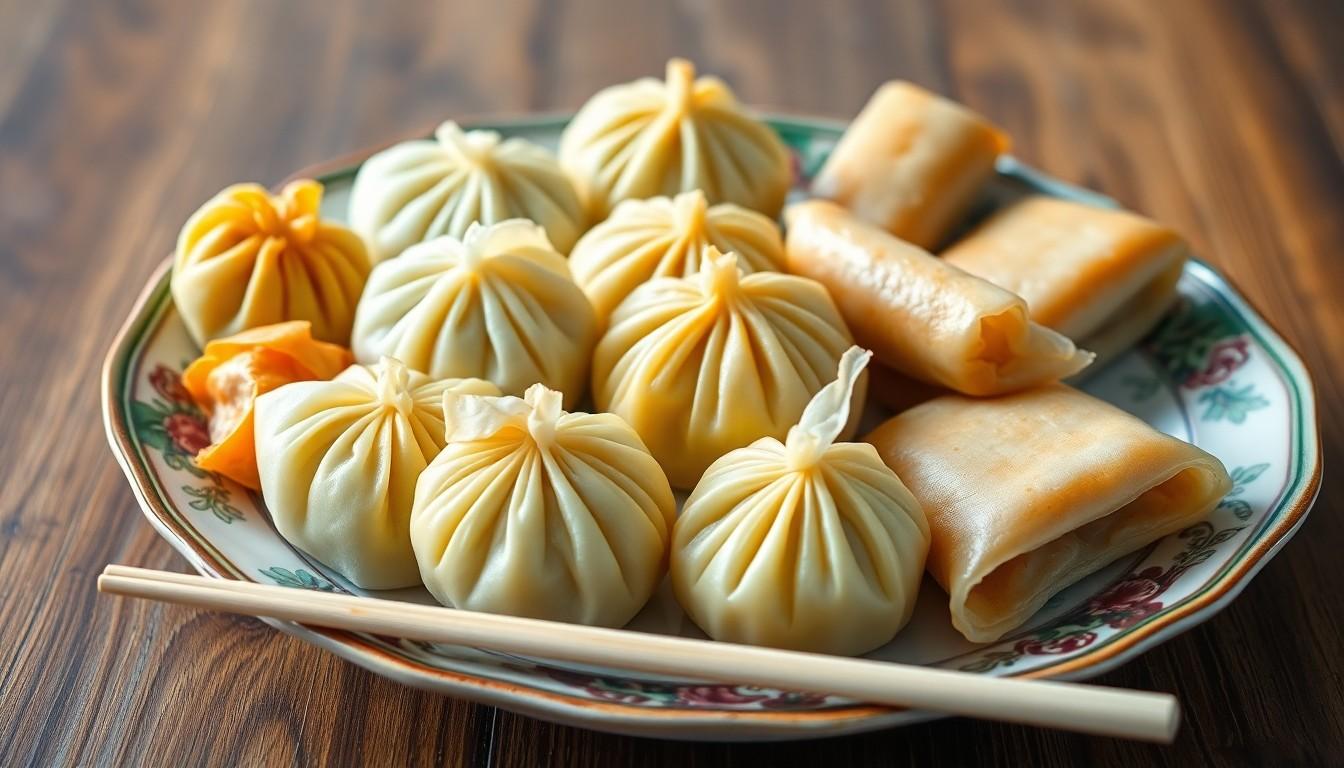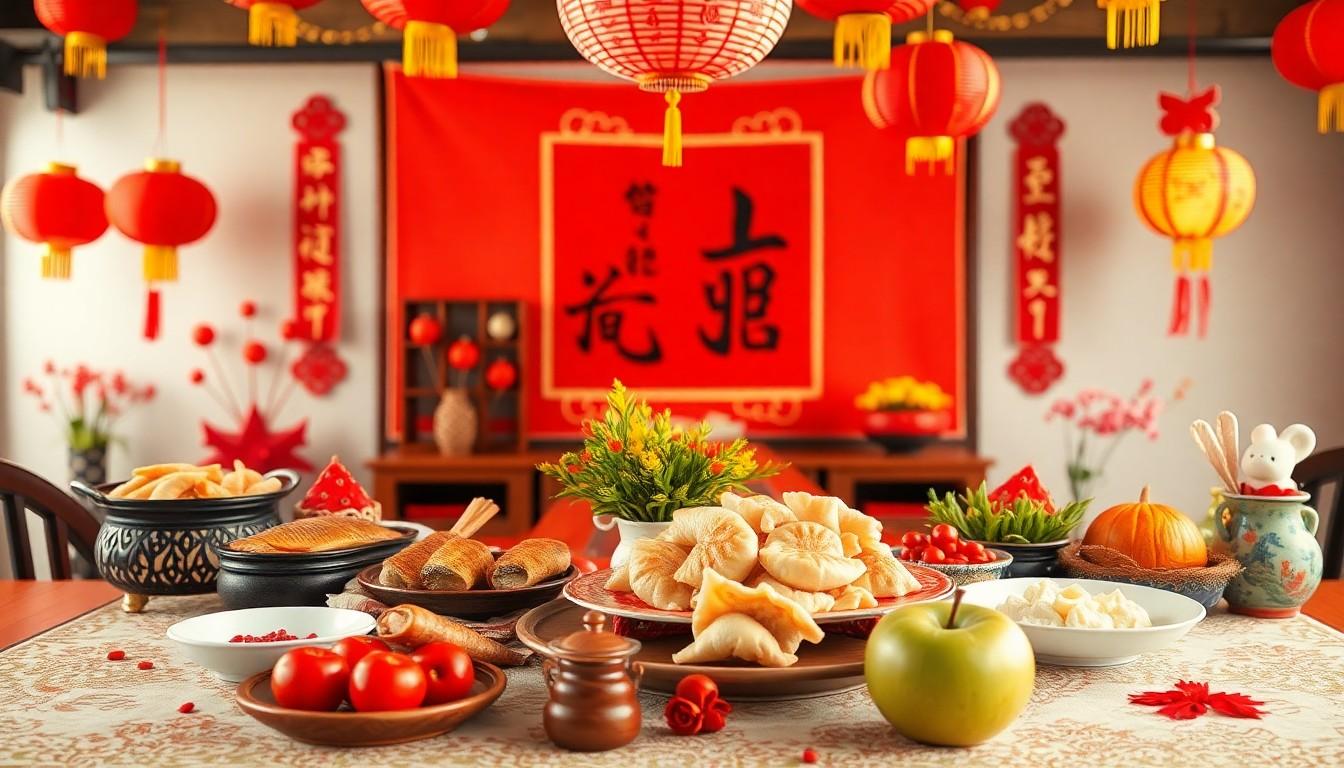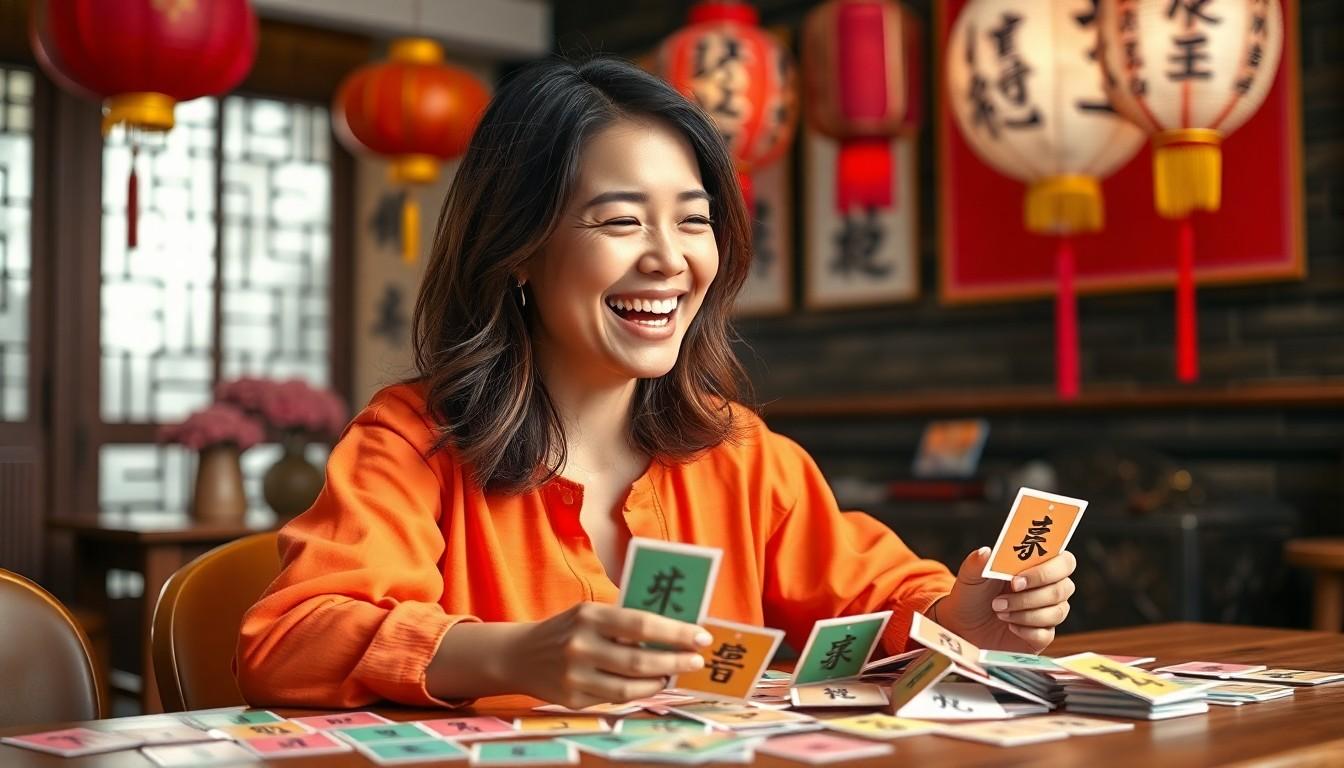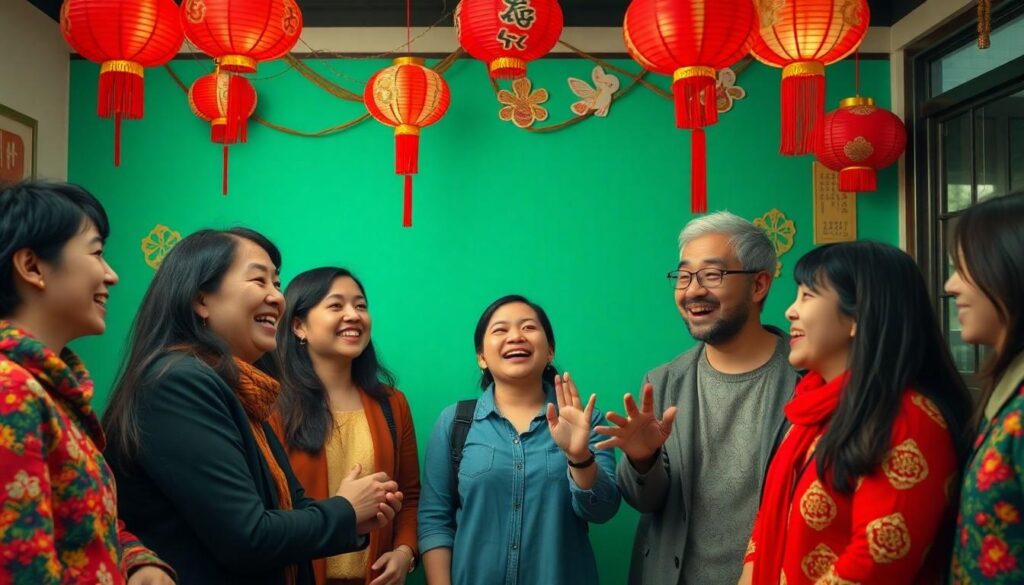Chinese puns, known as “xiehouyu” (歇后语), are a fascinating aspect of Chinese language and culture that blend humor, wisdom, and linguistic creativity. These wordplays leverage the language’s many homophones—words that sound alike but have different meanings—creating delightful moments of double entendre that often leave listeners smiling.
We’ve discovered that understanding Chinese puns not only enhances language learning but also provides unique insights into Chinese thinking patterns and cultural values. Whether you’re a language enthusiast, a student of Mandarin, or simply curious about cross-cultural humor, Chinese puns offer an entertaining gateway into one of the industry’s oldest civilizations.
Understanding the Unique Nature of Chinese Puns
Chinese puns differ significantly from their Western counterparts due to the fundamental structure of the Chinese language. Unlike English puns that often rely on multiple meanings of words, Chinese puns typically leverage the abundant homophones found in Mandarin and other Chinese dialects. These homophones create fertile ground for wordplay since many different characters share identical or similar pronunciations but have completely different meanings.
The tonal nature of Chinese adds another fascinating dimension to these linguistic jokes. Mandarin features four distinct tones (five if you count the neutral tone), allowing for even more opportunities to play with sound and meaning. A single syllable pronounced with different tones can yield entirely different words, creating a rich playground for pun creators.
Chinese written puns also deserve special attention as they exploit the visual components of characters. Many Chinese jokes involve characters that look similar or share radical components, enabling visual wordplay that simply doesn’t exist in alphabetic writing systems. This visual dimension adds layers of complexity and creativity to Chinese humor that we don’t typically find in Western languages.
Historical and cultural contexts heavily influence Chinese puns, with many referencing classical literature, historical events, or traditional customs. These culturally embedded jokes often carry deeper meanings that resonate with Chinese speakers on multiple levels. Understanding these references requires not just linguistic knowledge but cultural familiarity as well.
Regional variations in Chinese puns reflect the diversity of Chinese dialects across different provinces. Cantonese puns, for instance, use the dialect’s nine tones to create even more complex wordplay than Mandarin puns. Similarly, puns in Shanghainese or Sichuanese might draw on exact local expressions or pronunciation patterns unique to those regions.
Modern Chinese social media has become a hotbed for pun creation and dissemination. Internet users constantly develop new wordplay to evade censorship, comment on current events, or simply entertain each other. These contemporary puns spread rapidly online, becoming part of the evolving Chinese digital lexicon and reflecting the adaptive, creative nature of language users.
7 Types of Chinese Wordplay That Make Puns Possible

Chinese puns are incredibly versatile thanks to the unique linguistic features of the language. Let’s explore the different types of wordplay that make Chinese puns so rich and multifaceted.
Character Homophones: Same Sound, Different Meanings
Homophones form the backbone of Chinese punning, where different characters share identical pronunciations but convey entirely different meanings. Words like “公事” (gōng shì, public affairs), “公式” (gōng shì, formula), and “工事” (gōng shì, fortifications) sound exactly the same even though having distinct meanings and written forms. This abundance of homophones creates fertile ground for clever wordplay, allowing speakers to create jokes with multiple layers of meaning without changing pronunciation.
Tone-Based Puns: When Pitch Creates Humor
The tonal nature of Mandarin Chinese enables puns that rely on subtle pitch differences to create humor. Chinese words with similar syllables but different tones can carry completely different meanings, providing endless opportunities for wordplay. For example, “共识” (gòngshí, compromise), “共事” (gòngshì, work together), and “工时” (gōngshí, man-hour) differ only in their tonal patterns. Skilled punsters leverage these tonal variations to create jokes that might be missed by non-native speakers unfamiliar with the language’s pitch system.
Visual Character Puns: Playing With Chinese Characters
Visual puns capitalize on the graphic nature of Chinese characters, creating humor through visual similarity rather than sound. Creative writers and artists often play with character components, modifying or combining them in unexpected ways to suggest new meanings. These visual wordplays appear frequently in written humor, advertising, and modern digital communication where the visual element can be manipulated. Although less common in verbal exchanges, these puns showcase the unique advantages of a character-based writing system.
Number Wordplay in Chinese Culture
Numbers serve as powerful vehicles for puns in Chinese due to their cultural significance and homophonic relationships with other words. The number 4 (sì) sounds similar to “death” (sǐ), making it an unlucky number but useful for dark humor. Conversely, 8 (bā) resembles “prosperity” (fā), giving it positive associations in business contexts and everyday life. These number-based puns influence everything from pricing strategies to building floor numbering, demonstrating how deeply linguistic wordplay penetrates Chinese cultural practices.
Idiom Twisting: Reimagining Classic Expressions
Chinese punsters often create humor by cleverly altering traditional idioms or chengyu (set phrases typically consisting of four characters). By changing just one character or playing with contextual expectations, speakers can transform familiar sayings into surprising jokes. An example includes modifying “福到了” (fú dào le, fortune has arrived) to “福倒了” (fú dào le, fortune has fallen), creating a pun that sounds identical but conveys an opposite meaning. This wordplay technique demonstrates both linguistic creativity and cultural knowledge.
Homophonic Puns in Names
Names offer another rich source for Chinese puns, especially in literature and entertainment. Classic novels like “Dream of the Red Chamber” employ name-based wordplay, with the surname “賈” (Jiǎ) punning with “假” (jiǎ), meaning “fake” or “false.” Modern celebrities and brands also use this technique, selecting names that create positive homophonic associations. This naming strategy extends to business, where companies choose names with auspicious homophonic connections.
Cultural References
Cultural puns weave together linguistic elements with traditional beliefs and customs to create layered meanings. Words carrying superstitious connections become natural vehicles for wordplay. For instance, the word for “pear” (梨—lí) sounds identical to “separate” (离—lí), making shared pears symbolically inauspicious for couples. These culturally embedded puns demonstrate how Chinese wordplay goes beyond mere linguistic tricks to incorporate deeply rooted cultural knowledge and beliefs.
10 Hilarious Chinese Puns That Will Make You Laugh

1. Wonton in a million
This clever wordplay takes the classic expression “one in a million” and transforms it using the beloved Chinese dumpling. Wontons are staple dumplings in Chinese cuisine, making this pun especially relatable for food lovers who appreciate rare finds and exceptional experiences.
2. You make miso happy
While miso originates from Japanese cuisine, this pun has become popular in Chinese humor circles too. The phrase cleverly substitutes “me so” with “miso,” creating a heartwarming compliment that’s perfect for expressing gratitude or affection to someone who brightens your day.
3. I’m tofu-tally in love
Tofu serves as the star ingredient in this adorable pun that plays on the word “totally.” Chinese cuisine celebrates tofu in countless dishes, making this wordplay particularly fitting when describing overwhelming feelings of love or passion for something—or someone—special.
4. Chow down or chow out
This food-inspired choice presents a humorous ultimatum using “chow,” a term derived from Chinese cuisine vocabulary. The expression offers two clear options in a playful manner, making it perfect for dinner invitations or restaurant decisions.
5. I’m on a roll, just like a spring roll
Success feels crispy and delicious with this pun that compares personal achievement to the perfectly wrapped Chinese appetizer. Spring rolls represent precision and consistency, much like someone who’s experiencing a streak of good fortune or accomplishments.
6. You’re the bao to my heart
Bao buns—those fluffy, steamed wonders of Chinese cuisine—form the foundation of this sweet declaration. The pun works by replacing “bow” with “bao,” creating a delicious expression of affection that food enthusiasts particularly appreciate.
7. Pho-get about it, I’m a noodle master
Though pho originated in Vietnam, this noodle pun has been embraced within Chinese humor. The wordplay substitutes “forget” with “pho-get” to create a confident statement about noodle expertise, perfect for anyone who prides themselves on their cooking skills.
8. Life’s more szechuan when you smile
This spicy pun leverages Szechuan (Sichuan) cuisine’s reputation for bold flavors to suggest that smiles bring richness to life. The phrase cleverly substitutes “special” with “szechuan,” creating a warming sentiment that acknowledges how happiness adds flavor to everyday experiences.
9. Dim sum light on a cloudy day
Dim sum, the beloved Chinese tradition of enjoying small plates of delicious bites, becomes a beacon of hope in this wordplay. The pun brilliantly combines “dim sum” with “some light,” suggesting that even small joys can brighten difficult times.
10. Strike while the wok is hot
This culinary twist on the classic idiom “strike while the iron is hot” substitutes the essential Chinese cooking vessel—the wok—for added cultural relevance. The pun maintains the original wisdom about seizing opportunities at the perfect moment while adding a delicious Chinese cooking reference.
How Chinese Puns Appear in Traditional Festivals

Chinese festivals are vibrant celebrations where wordplay adds layers of cultural meaning and humor. Homophonic puns in particular transform ordinary customs into rich symbolic experiences during these special occasions.
Lunar New Year Wordplay and Symbolism
The Lunar New Year showcases Chinese pun mastery through food-related wordplay that brings good fortune. “Nián nián yǒu yú” (年年有魚) cleverly plays on homophones, as it sounds identical to “年年有余” meaning “abundance every year,” which explains why fish dishes are essential to New Year feasts. Families serve dumplings (jiǎo) because they sound like the word for “meeting” (jiāo), expressing wishes for joyful reunions in the coming year. Apples also hold special significance during celebrations because “píngguǒ” (apple) contains the character “píng,” which resembles “píng’ān” meaning peace and tranquility. These wordplay examples demonstrate how Chinese traditions intertwine language with symbolic actions, creating meaningful practices that have endured for generations.
Mid-Autumn Festival Puns
The Mid-Autumn Festival incorporates subtle wordplay centered around unity and completeness themes. Mooncakes, while not strictly involved in puns, symbolize wholeness with their round shape mirroring the full moon that represents family reunions. Traditional greetings during this festival often use homophonic expressions that sound similar to auspicious words and phrases. Festival customs incorporate wordplay that wishes good fortune, reflecting the Chinese language’s rich potential for creating layers of meaning. Local variations add distinct flavors to these expressions, with different regions developing their own festival-exact puns based on dialect peculiarities. The creative use of language during this celebration showcases how deeply linguistic playfulness is embedded in Chinese cultural expressions across different seasonal festivities.
Chinese Puns in Modern Advertising and Branding

Leveraging Homophones for Brand Impact
Chinese brands expertly use homophones to create memorable marketing campaigns. The tonal nature of the Chinese language provides an abundance of words that sound identical but carry completely different meanings, making it a playground for creative advertisers. Companies create clever slogans that operate on multiple levels of meaning, allowing consumers to make instant connections while remembering the brand message. These homophonic puns work particularly well in Chinese advertising because they can convey complex brand values in just a few characters, maximizing impact in limited advertising space.
Creating Punny Slogans That Resonate
Effective Chinese advertising slogans use puns to create concise yet powerful brand messaging. Marketing teams carefully develop these slogans to be both highly appealing and relevant to their products, often playing with the multiple meanings inherent in Chinese words. These punny phrases stick in consumers’ minds far longer than straightforward statements, giving brands a important edge in the competitive marketplace. Advertising professionals understand that a well-crafted pun can communicate brand personality while entertaining the audience simultaneously.
Incorporating Cultural and Social References
Modern Chinese advertisements infuse puns with recognizable cultural elements that instantly connect with local audiences. A notable example comes from the Chinese car rental company Ehi, which featured NBA star Stephen Curry in a commercial poking fun at the “head-down species” – people constantly glued to their phones. Brands strategically weave in social phenomena that Chinese consumers immediately recognize, making the puns more relatable and effective. This cultural grounding helps advertisements feel both relevant and authentically Chinese.
Balancing Collective vs. Individual Humor
Unlike American advertisements that often emphasize individual benefits, Chinese punny ads typically highlight collective advantages. Traditional Chinese humor tends to focus on what benefits the entire community rather than just a single person. A classic example comes from Guangzhou Haodi shampoo’s slogan: “What’s good for everyone is really good.” This approach reflects the deeper cultural emphasis on collectivism in Chinese society. Brands that understand this distinction can create humor that truly resonates with Chinese consumers.
Handling Humor in Luxury Marketing
Luxury brands face unique challenges when incorporating puns into their Chinese marketing strategies. High-end companies must carefully balance maintaining their prestigious image while connecting with consumers through humor. Understanding current comedy trends in China is essential for luxury marketers who want their puns to enhance brand perception rather than diminish it. When executed properly, even exclusive brands can use subtle wordplay to appear more approachable without compromising their premium positioning.
Employing Tactical Wordplay Techniques
Chinese advertisers use several exact techniques to create effective puns in their campaigns. Double meanings, clever turns of phrase, and unexpected word associations all feature prominently in successful Chinese advertising. Brands frequently create slogans that sound similar to well-known expressions but twist them to relate directly to their products. These tactical approaches make advertisements more captivating and memorable for Chinese consumers who appreciate linguistic creativity. The best campaigns seamlessly blend product attributes with clever wordplay that rewards the audience for making the connection.
How Social Media Has Transformed Chinese Pun Culture

Rise of Homophones and Wordplay
Social media platforms have dramatically amplified the use of Chinese homophones, turning them into powerful tools for political awareness and social commentary. Users creatively employ terms like the “Grass Mud Horse” and the “River Crab” as symbolic expressions that represent the tension between internet users and censorship authorities. These clever linguistic inventions allow Chinese netizens to discuss sensitive topics while avoiding detection by automated filtering systems. The rapid sharing capabilities of social platforms ensure these puns spread quickly, creating a shared cultural vocabulary among millions of users.
Internet Slang and Affectionate Language
Online communication styles have evolved with the rise of social media, introducing new ways of greeting and addressing others. Terms such as “亲” (qin), which means both “dear” and “kiss,” have become standard vernacular on platforms like Taobao and WeChat. This shift toward more affectionate language reflects the increasingly personal nature of digital interactions. E-commerce sites particularly influenced this trend, as sellers sought to create friendly connections with potential customers through warm, personalized language choices.
Subversive Expressions
Chinese netizens have mastered the art of developing subversive expressions that critique societal issues while evading censorship. These expressions typically leverage wordplay and puns to convey messages that might otherwise be blocked or removed. Social media provides the perfect environment for these subtle forms of dissent to thrive, allowing users to engage in political and social discourse through creative linguistic means. The collective understanding of these coded messages creates a sense of community among users who recognize and appreciate the underlying meanings.
Influence of Globalization and Internet Culture
Global connectivity has exposed Chinese humor to international influences, resulting in a fascinating blend of traditional and modern comedic styles. Memes, viral videos, and online communities help the constant exchange of humorous content across cultural boundaries. This cross-pollination has made Chinese humor more diverse and connected to worldwide comedy trends. Social media platforms serve as cultural melting pots where traditional Chinese wordplay meets global internet humor, creating entirely new forms of expression that resonate with younger generations.
Marketing and Advertising
Brands increasingly use puns and wordplay in their marketing strategies to create memorable advertising campaigns that resonate with Chinese consumers. The prevalence of puns in Chinese culture makes them particularly effective tools for captivating audiences and creating lasting brand impressions. But, recent regulatory crackdowns on advertising puns have raised concerns about potential limitations on creative expression in commercial contexts. Marketers now face the challenge of balancing linguistic creativity with compliance to evolving guidelines about acceptable content.
Cultural Context
Understanding the full impact of social media on Chinese pun culture requires recognizing how deeply these wordplays are rooted in traditional Chinese philosophy and social structures. Confucian and Taoist influences shape the themes and delivery of these puns, with family relationships and social harmony often featuring prominently. Social media hasn’t just changed how puns spread—it has transformed how they’re created, understood, and incorporated into daily communication. This evolution reflects broader shifts in Chinese society while maintaining connections to cultural traditions that have valued wordplay for centuries.
Regional Variations: Puns Across Different Chinese Dialects

Mandarin Wordplay
Mandarin puns represent the most widely recognized form of Chinese wordplay, leveraging the standardized pronunciation system. Characters like 公事 (gōng shì), 公式 (gōng shì), and 工事 (gōng shì) create perfect puns because they sound identical but mean completely different things – “public affairs,” “formula,” and “fortifications” respectively. These homophones enable speakers to create clever jokes that rely on the listener’s ability to distinguish meaning from context rather than sound.
Shanghainese and Wu Dialect Humor
Wu dialect puns, particularly those in Shanghainese, feature more nuanced phonological elements not present in standard Mandarin. The retention of voiced or murmured obstruent initials gives Wu dialect wordplay a distinctive character that’s often impenetrable to speakers of other Chinese varieties. Local vocabulary and pronunciation patterns in Shanghai and surrounding regions of Zhejiang, Jiangsu, and Anhui create puns that are deeply rooted in regional cultural contexts.
Gan Dialect Wordplay
Puns in Gan dialects showcase unique phonological transformations exact to Jiangxi and neighboring areas. The conversion of Middle Chinese voiced initials into voiceless aspirated sounds creates opportunities for wordplay that wouldn’t function in other dialects. Regional speakers leverage these distinctive sound patterns to create jokes and puns that reflect their local linguistic heritage.
Xiang Dialect Variations
Xiang dialect puns divide along the lines of New Xiang and Old Xiang varieties spoken throughout Hunan and southern Hubei. New Xiang, with its Southwest Mandarin influences, produces blended wordplay that draws from multiple linguistic traditions. Old Xiang varieties maintain voiced initials and other distinctive features that enable highly specialized puns unintelligible to outsiders.
Min Dialect Diversity
Min dialects present perhaps the most diverse playground for puns within the Chinese language family. Spoken across Fujian, eastern Guangdong, and parts of Southeast Asia, Min varieties like Hokkien and Taiwanese feature highly localized wordplay. These dialects are often mutually unintelligible even among themselves, creating pun ecosystems that are hyper-exact to particular communities and their unique vocabulary.
North-South Humor Divide
We observe a fascinating regional divide in Chinese pun styles that transcends purely linguistic differences. Northern Chinese humor, including Mandarin-based puns, tends toward bold, slapstick approaches with direct punchlines. Southern wordplay found in Wu and Min dialects often embraces subtlety and linguistic cleverness, requiring deeper cultural knowledge to appreciate. This north-south humor divide reflects broader cultural differences that influence how puns are crafted and received throughout Chinese-speaking regions.
Learning Chinese Through Puns: A Fun Approach to Language Mastery

Understanding the Structure of Chinese Puns
Chinese puns primarily rely on wordplay through homophones, where different words share identical pronunciations. Many beginners find this aspect of Mandarin fascinating as it creates opportunities for clever jokes and meaningful connections. The classic example of the “class orangutan” demonstrates this perfectly, where “星星 (xīng xīng)” meaning “star” and “猩猩 (xīng xīng)” meaning “orangutan” sound exactly the same even though having completely different meanings. Learning to recognize these homophones helps students develop a deeper appreciation for the language’s unique characteristics and structural patterns.
Cultural Insights Through Wordplay
Puns serve as windows into Chinese culture, revealing values, history, and social perspectives through linguistic humor. We’ve found that students who engage with Chinese jokes gain more than just language skills—they develop cultural competence that’s difficult to acquire through textbooks alone. Each pun typically contains cultural references that help learners connect with contemporary Chinese society or traditional customs. Studying these cultural elements embedded in puns makes language learning more meaningful and contextually rich for students at all proficiency levels.
Improving Vocabulary and Pronunciation
Practicing with puns dramatically enhances vocabulary retention and pronunciation accuracy. Students who learn words through humorous contexts remember them more effectively than through rote memorization. Breaking down each joke component by component allows learners to practice precise pronunciation differences that might otherwise be overlooked. The repetitive nature of telling and explaining puns reinforces proper tones and articulation, addressing one of the most challenging aspects of Mandarin learning for non-native speakers.
Making Learning Enjoyable and Effective
Incorporating puns transforms the sometimes tedious process of language acquisition into an captivating experience. Research suggests that information learned with positive emotional associations is retained more effectively in long-term memory. Educational studies confirm that humor reduces learning anxiety and creates a more receptive mindset for language acquisition. Students consistently report higher motivation levels when humor is integrated into their learning materials, making pun-based lessons particularly valuable for maintaining study momentum during challenging phases of language learning.
Resources for Learning Chinese Through Puns
Several excellent resources exist for students wanting to explore Chinese puns as a learning tool. Websites like Dim Sum Warriors and Mandarin HQ offer collections of jokes with explanations customized specifically for language learners. YouTube channels feature videos breaking down puns into their component parts while demonstrating proper pronunciation and contextual usage. Language exchange platforms provide opportunities to practice puns with native speakers who can explain nuances that might be missed in textbook explanations. These resources cater to various learning styles and proficiency levels, making pun-based learning accessible to anyone interested in mastering Mandarin.
Conclusion: The Enduring Charm of Chinese Wordplay
Chinese puns represent far more than clever wordplay – they’re windows into a culture that values linguistic dexterity and shared humor. From traditional festivals to modern social media these expressions connect generations while evolving with the times.
We’ve seen how xiehouyu enriches language learning bridges cultural divides and creates memorable moments in everything from casual conversation to sophisticated marketing. Their ability to convey complex ideas through simple homophones showcases the remarkable flexibility of the Chinese language.
Whether you’re a language enthusiast cultural explorer or someone who simply appreciates good humor Chinese puns offer something uniquely valuable. They remind us that across all languages the joy of playing with words remains one of humanity’s most enduring pleasures.
Frequently Asked Questions
What are Chinese puns or “xiehouyu”?
Chinese puns or “xiehouyu” are a form of wordplay that blend humor, wisdom, and linguistic creativity in Chinese language. They primarily utilize homophones (similar-sounding words) to create double entendres that amuse listeners while often conveying cultural wisdom. These puns represent a unique aspect of Chinese communication that combines entertainment with deeper cultural meanings.
How do Chinese puns differ from Western puns?
Chinese puns differ from Western puns by leveraging the unique structure of the Chinese language. They utilize abundant homophones, the tonal nature of Mandarin, and the visual components of Chinese characters. This creates complex wordplay impossible in alphabetic languages. Chinese puns also frequently reference classical literature and traditions, adding cultural depth that Western puns typically don’t have.
Why are Chinese puns important for language learners?
Chinese puns help language learners master pronunciation, understand cultural contexts, and retain vocabulary more effectively. They expose learners to the tonal nature of Chinese and provide insights into cultural values and thinking patterns. Learning through puns makes the process more enjoyable and motivating, helping students connect with the language on a deeper level while appreciating its creative potential.
What types of Chinese wordplay exist?
Chinese wordplay includes character homophones (similar-sounding characters), tone-based puns (playing with the four tones), visual character puns (based on character appearance), number wordplay (numbers that sound like words), idiom twisting (modifying traditional sayings), and homophonic puns in names. Each type showcases different aspects of linguistic creativity in Chinese language.
How are Chinese puns used in traditional festivals?
During traditional festivals, Chinese puns add layers of cultural meaning and humor. For example, during Lunar New Year, foods and decorations often incorporate puns relating to prosperity and good fortune. During the Mid-Autumn Festival, wordplay enhances celebrations and connects festivities to cultural traditions. This linguistic playfulness is embedded in seasonal celebrations throughout the Chinese calendar.
How are Chinese puns used in modern advertising?
Brands leverage Chinese puns in advertising to create memorable marketing campaigns through clever homophones that associate products with positive qualities. These puns often incorporate cultural and social references that resonate with Chinese consumers. Unlike American advertising that focuses on individuality, Chinese advertising puns often emphasize collective values and shared cultural understanding.
How has social media transformed Chinese pun culture?
Social media has amplified Chinese pun culture by enabling wider and faster dissemination of wordplay. It has fostered the development of internet slang, political commentary through coded language, and subversive expressions that critique societal issues. Social media platforms have become spaces where traditional wordplay evolves to reflect contemporary concerns while maintaining connections to centuries-old linguistic traditions.
What are the regional variations in Chinese puns?
Regional variations in Chinese puns stem from different dialects including Mandarin, Cantonese, Shanghainese, and others. Each dialect features unique phonological elements and cultural contexts that create dialect-specific wordplay. Northern Chinese humor tends to be bold and direct, while southern humor is often more subtle and clever, reflecting broader cultural differences in how puns are crafted and received.
How can beginners start learning Chinese puns?
Beginners can start learning Chinese puns through resources like The Chairman’s Bao, Chineasy, and YouTube channels such as “Chinese With Mike.” Language exchange platforms like HelloTalk allow practice with native speakers. Start with simple homophones and gradually progress to more complex wordplay. Focus on understanding both the literal meaning and cultural context for maximum learning benefit.
Why do Chinese puns often appear in festival celebrations?
Chinese puns in festivals reinforce cultural values and create a sense of communal joy. They transform ordinary objects and foods into symbols of good fortune through wordplay. For example, fish (鱼/yú) sounds like “surplus” (余/yú), making it a popular dish symbolizing abundance. This linguistic tradition helps pass down cultural values while making celebrations more meaningful and entertaining.







